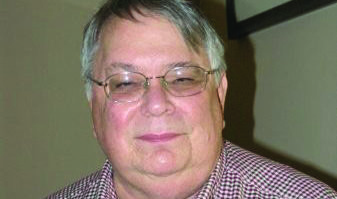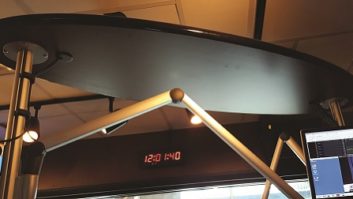Since 1971, Liberty University in Lynchburg, Va., has been providing a faith-based liberal arts education to college students. The school houses 14,000 students on its campus, and 94,000 students are enrolled online. In the late 1970s, the university applied for a Class-C1 FM license that would serve the central Virginia area and enhance its local ministry. By 1981, WRVL �The Radio Voice of Liberty� was on the air. Today, its listeners know WRVL as �The Journey.�
In 2005, the management at The Journey pitched an idea to expand the listenership: Six translator CPs were secured and a terrestrially fed FM network was launched. Within a year, the university administration took a greater interest in translators and included the possibility of feeding full-power stations. The Journey management was told to �build as many outlets as it takes to serve all of Virginia.�
� This simplified chart visualizes the WRVL XDS uplink flow.
Credit: Ka You Communications

In 2007, Ka You Communications was hired to build and provide continued support for a Ku uplink on Liberty�s campus. By January 2008, a 2.4-meter dish with a dual block upconverter and automatic switching system was installed in the lot behind the studios. Dual Comtech modems and Tiernan encoders were installed, providing a fully redundant uplink. After three days of work, the uplink fed a handful of translators and full-power stations in Virginia and northeastern North Carolina.
Chris Wygal stands in front of the uplink rack.
Credit: Ka You CommunicationsA PLACE FOR KU

The Journey chose the Ku-band satellite platform for several reasons. Even though the Ku-band carrier is more susceptible to signal degradation caused by poor weather than its C-band cousin, rain fade issues regarding Ku signal strength are minimal in the mid-Atlantic region. Additionally, 1.8-meter Ku-band antennas are considerably smaller than C-band antennas, keeping landlords and municipalities at bay.
Ka You Communications had been a key player in technology concerning automatic uplink power control. AUPC systems traditionally required third-party manufacturers whose equipment would automatically increase or decrease power levels. This is a vital function during inclement weather conditions in order to maintain acceptable service. In 2006, Ka You worked with Comtech to develop an internal AUPC in the DMD20 uplink modem. This feature saved satellite customers as much as $25,000 in equipment purchases.
Ka You Communications stood out as an obvious choice in provider.
Mark Johnson works on the setup of the XDS VME-5 encoder/mux.
Credit: Ka You CommunicationsCHANGE IN DIRECTION

In 2013, Comtech ended a 24-year run using the ABR model receivers. This prompted The Journey to replace transmit and receive equipment and take advantage of future possible expansion capabilities. Through guidance from Ka You and a team of consulting engineers, The Journey decided to switch its Ku system to XDS from Pico Digital. Pico Digital had a considerable number of units already in the field, making them a trusted product provider to consider.
The Journey�s Ku network serves 12 satellite-fed outlets in Virginia and North Carolina, making the most predominant challenge to keep the current uplink in service while integrating the XDS system one location at a time. The network also consists of a store-and-forward playout system developed through a partnership with Ambassador in Irvine, Calif. Pico Digital has a robust store-and-forward system that comes as a powerful option within the XDS platform, but The Journey decided to continue with usage and development of the store-and-forward system already in use.
Keeping everything on the air during the transition was a tall order.
Ka You�s Field Service Director Daryl Doss and author Chris Wygal are shown following uplink installation and activation in 2007.
Credit: Ka You CommunicationsPLAN OF ATTACK

When the time came for the conversion from Comstream to XDS to take place, Ka You allocated extra bandwidth on Galaxy 25 to allow for the MCPC and SCPC carriers to work simultaneously. The Comstream single channel per carrier system allowed for only one stereo channel. The new XDS encoders employ four stereo inputs over multiple channels per carrier. Ka You provided enough bandwidth to keep the current stereo 256 kbps Comstream channel active and to add two stereo 256 kbps XDS channels. The flexibility in this setup is considerable.
Since The Journey uses a dual uplink system, one Comstream encoder and modem pair was left in place to carry program material to existing ABR receivers in the field. The crux of the change came by replacing the other Comstream DAC7000 encoder with the XDS VME5. The VME5 is a four RU unit with an expandable chassis. The Journey system currently uses one audio card with four stereo inputs.
The next step was to modify the other Comstream DMD20 by integrating a new MUX card, effectively making it a DVB modem. With this scenario, audio is connected to the VME5 encoder using 9-pin D-sub connectors. In order to send relay commands to the soon-to-be-installed XDS Pro1Q receivers in the field, dry relay closures from the network automation switcher are converted to RS-232 data by a compact device developed by iHeart Media called the �EtherStuff UDP32.� It has a 37-pin D-sub input and dual 9-pin D-sub connectors for data output to two encoders. The RS-232 data is connected to the VME5 using a 37-pin D-sub connector. The encoder sends ASI transport data to the DMD20 modem via BNC connections. The DMD20 generates the L-band IF carrier, which is connected to the amplifiers at the uplink dish.
While the Comstream and XDS systems are operating in tandem, the two modems are physically muxed on only one side of the dual uplink, meaning the backup system isn�t fully operational. When the entire network has been converted to XDS, and the Pro1Q receivers are all deployed, the Comstream equipment will be taken out of service and the two XDS encoders will provide primary and backup service.
EQUIPMENT LIST
Two Comstream DMD20 modified DVB modems
Two XDS VME5 encoders with four audio inputs and RS-232 input with ASI data transport
EtherStuff UDP32 RS-232 data converter
Dual Anacom block upconverter amplifiers
Andrews 2.4-meter offset uplink dish
THE JOURNEY CONTINUES
Liberty University�s radio outreach is in a position to now consider serving different communities around the mid-Atlantic region with more than one radio format. The installation of the VME5 XDS encoder will facilitate multiple audio channels over the MCPC carrier. The XDS Pro1Q receivers are easily tuned and programmed remotely through Telnet over IP or the receiver�s GUI. This has increased The Journey�s confidence in providing content to communities miles away via its Ku uplink.
Through the partnership with the team at Ka You Communications, utilizing the full scope of services and features provided by the XDS system will, in the near future, prove to be a wise investment.











